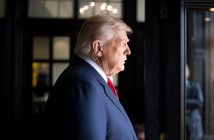Authored by Prof. Ruel F. Pepa via GlobalResearch.ca,
At the recent Shanghai Cooperation Organization summit in Tianjin, leaders representing over half of humanity signaled the rise of a multipolar world order. As China, Russia, India, and Central Asia push new financial and trade systems, the West risks being left on the sidelines.
When the leaders of China, Russia, India, and several Central Asian states gathered in Tianjin last week for the Shanghai Cooperation Organization (SCO) Summit, the world should have paid far closer attention. Collectively, the countries represented at the table account for more than half of humanity, command immense reserves of natural resources, and increasingly drive a larger share of global GDP. This is not a peripheral coalition but a core pillar of the international system in the making.
Yet much of the Western press treated the gathering as little more than a diplomatic sideshow, overshadowed by domestic political debates or the latest updates from NATO. That was a mistake. What unfolded in Tianjin was not just another regional summit. It was the clearest indication yet that the unipolar world of U.S. primacy, which dominated the decades after the Cold War, is giving way to a new and contested multipolar order.
The symbolism was unmistakable. Beijing positioned the SCO as a platform for “equal partnership,” implicitly contrasting it with Western alliances built around hierarchy and U.S. leadership. Moscow emphasized strategic coordination in the face of sanctions and military pressure from the West. India, while carefully balancing its ties with Washington, underscored its role as a civilizational power charting an independent path. The Central Asian republics, long seen as geopolitical battlegrounds between outside powers, asserted their relevance as connectors of trade, energy, and security across Eurasia.
Beyond symbolism, the summit carried substance. Agreements on energy cooperation, cross-border infrastructure, digital technology, and security coordination point toward an increasingly institutionalized bloc. Taken together, they signal that the SCO is evolving from a loose forum into a framework capable of shaping the rules of the 21st-century world.
For policymakers in Washington and European capitals, the lesson is sobering. Ignoring the SCO or dismissing it as a talking shop risks overlooking the consolidation of an alternative power center that is steadily building legitimacy outside of Western institutions. For the rest of the world, particularly in the Global South, Tianjin served as a reminder that power is no longer concentrated in a single pole, but dispersed across multiple capitals with diverging visions of order.
The summit was therefore more than a diplomatic calendar entry. It was a milestone in the slow but unmistakable rebalancing of global power and a process that will define international politics for decades to come.
Russian President Vladimir Putin, Indian Prime Minister Narendra Modi and Chinese leader Xi Jinping at the SCO Summit. (GODL-India)
A New Architecture Emerges
Chinese President Xi Jinping used the summit to press his vision of a world that renders Cold War mentalities a matter of the past. His remarks were not mere diplomatic pleasantries; they were a direct critique of the U.S.-led alliance system and its reliance on deterrence, sanctions, and bloc politics. Backed vocally by Vladimir Putin, Xi pledged to accelerate the creation of a multipolar order in which Western dominance would be checked by new centers of power across Eurasia and beyond [1].
What distinguished Tianjin from previous summits was that these calls were tied to concrete initiatives. Beijing unveiled a 10-year development strategy for the SCO, underwritten with billions of dollars in loans and grants earmarked for infrastructure, energy corridors, and digital connectivity projects [2]. This framework goes well beyond aspirational communiqués: it signals a deliberate attempt to institutionalize the SCO as both an economic and geopolitical force.
One of the boldest proposals on the table was the creation of a dedicated SCO development bank that poses an explicit challenge to the Bretton Woods institutions, particularly the IMF and World Bank. Such a body, if realized, would allow SCO members to finance projects without the conditionalities often imposed by Western lenders. It would also complement other Chinese-led initiatives such as the Asian Infrastructure Investment Bank (AIIB) and the Belt and Road Initiative, weaving them into a broader Eurasian financial ecosystem.
The implications are far-reaching. For decades, the global financial order has revolved around institutions headquartered in Washington and Brussels, shaping development trajectories in the Global South. By offering alternative sources of capital, Beijing and its partners are signaling that the monopoly of Western financial governance is coming to an end. The SCO’s proposed bank would not only fund railways, pipelines, and fiber-optic networks across Eurasia but also serve as a symbolic assertion of financial sovereignty.
The message from Tianjin was unambiguous: the institutions of the West will no longer go unchallenged. A parallel architecture emerging reflects the priorities of Beijing, Moscow, New Delhi, and the capitals of Central Asia. It is not yet clear how cohesive or durable this architecture will prove, but its mere existence underscores that the world has moved beyond unipolarity. The battle is no longer over whether the West will be challenged, but over how rapidly alternative institutions can be consolidated, and how effectively they can deliver.
Central Asia at the Core
The Shanghai Cooperation Organization is increasingly positioning Central Asia as the backbone of the emerging multipolar world. Far from being a peripheral region, the Central Asian republics are becoming the crossroads of Eurasian connectivity and influence. Trade corridors linking Shanghai to St. Petersburg are facilitating the movement of goods, capital, and people across thousands of kilometers. Energy pipelines crisscross Kazakhstan, Uzbekistan, Turkmenistan, and beyond, ensuring that the region’s vast natural resources flow to both Chinese and Russian markets while integrating it into a broader strategic network. Meanwhile, digital “Silk Roads” are introducing Chinese standards for 5G, artificial intelligence, and telecommunications infrastructure, further embedding Beijing’s technological footprint across the continent [3].
For decades, Central Asia was largely treated as a geopolitical periphery, a buffer zone caught between the lingering influence of Russia and the rising ambitions of China. Moscow maintained traditional security ties and economic leverage, while
Beijing cultivated trade and investment links primarily through infrastructure projects. Western powers, by contrast, engaged only sporadically, mostly through development aid or counterterrorism initiatives. The region’s strategic importance was recognized, but its potential as a hub of independent, multipolar influence remained unrealized.
That era is now coming to an end. With the SCO providing both institutional frameworks and concrete projects, Central Asia is transitioning from a passive periphery to an active strategic heartland of the new order. Its cities, railways, pipelines, and digital networks are not just local assets but the connective tissue of a Eurasian system designed to operate largely independently of Western-dominated institutions. By anchoring trade, energy, and technology in Central Asia, Beijing, Moscow, and their partners are effectively recasting the region as a central node in the global architecture of power.
The implications are profound. Central Asia is no longer a “backyard” for external powers; it is a linchpin of geopolitical strategy, economic integration, and technological standard-setting. As the SCO continues to consolidate its influence, the region’s rising prominence underscores that multipolarity is not merely a distant aspiration; it is being physically and institutionally constructed, rail line by rail line, pipeline by pipeline, and gigabyte by gigabyte.
The Electro-Yuan Gambit
Perhaps the boldest and most consequential development in Tianjin was Chinese President Xi Jinping’s call to expand the use of the yuan in energy settlements.
Analysts quickly dubbed the concept the “electro-yuan,” a system designed to link China’s digital currency with cross-border trade in oil, gas, and electricity. Unlike conventional trade settlements, which rely on correspondent banking in U.S. dollars, the electro-yuan would enable real-time, blockchain-enabled transactions directly between SCO member states, bypassing traditional financial intermediaries.
This is about far more than convenience or modernization. If widely adopted, the electro-yuan could significantly weaken the petrodollar system, which has underpinned U.S. financial dominance since the 1970s. The dollar’s centrality in global energy markets has long allowed Washington to exert extraordinary influence over international finance and foreign policy. By creating a credible alternative settlement system, Beijing and its SCO partners would undermine this leverage, diminishing the reach of dollar-based sanctions and reducing the United States’ ability to enforce geopolitical objectives through financial pressure.
The implications extend beyond energy. A robust electro-yuan network could accelerate the internationalization of China’s digital currency, the e-CNY, and provide a model for other nations seeking to hedge against the dollar. Coupled with SCO-led development projects and cross-border trade corridors, it represents a deliberate attempt to construct the “plumbing” of a parallel financial system that operates on terms favorable to Eurasian partners rather than Western institutions.
The ripple effects for global markets could be profound. If SCO countries begin pricing energy, commodities, and infrastructure projects in yuan rather than dollars, it could reduce demand for U.S. currency reserves, influence exchange rates, and reshape global investment flows. Commodity markets may see shifts in pricing benchmarks, particularly in oil and natural gas, as the electro-yuan provides a viable alternative to the dollar-based contracts that dominate today. For investors and multinational corporations, reliance on the dollar as the default currency for trade and finance may gradually diminish, introducing new risks and opportunities in hedging, capital allocation, and currency management.
For policymakers in Washington and Brussels, the message is stark: the rules of global finance may be shifting beneath their feet. A system that decouples trade and investment from the dollar would not only reduce the United States’ economic influence but also recalibrate global alliances, making financial sovereignty a tangible tool of statecraft for countries like China, Russia, and their SCO partners.
In short, the electro-yuan is more than a financial experiment but a strategic gambit, signaling that the SCO is not content merely to challenge Western hegemony rhetorically. It is building the infrastructure that could one day rival, and perhaps circumvent, the very foundations of U.S.-led global economic power, with consequences that extend to every corner of the global market.
India’s Pragmatic Hedge
The presence of Prime Minister Narendra Modi at the Tianjin summit lent the gathering even greater weight and global significance. Historically cautious about Chinese-led initiatives, India has often approached regional multilateral frameworks with skepticism, wary of being overshadowed by Beijing or Moscow. Modi’s participation signaled a subtle but meaningful shift in India’s strategic calculus that acknowledged engagement, rather than isolation which is essential in a rapidly evolving multipolar world.
Image: Xi Jinping meeting with Narendra Modi (GODL-India)
At Tianjin, New Delhi agreed to concrete measures aimed at rebalancing trade with China, loosening visa restrictions, and enhancing connectivity initiatives within the SCO framework [4]. These steps demonstrate a willingness to separate economic pragmatism from ongoing territorial and border disputes, particularly in regions such as Ladakh and Arunachal Pradesh. By compartmentalizing these issues, India is signaling that it can cooperate on economic and regional integration while maintaining its security concerns.
For India, engagement in the SCO is not a matter of siding with Beijing or Moscow. Instead, it reflects a strategic hedging approach: mitigating the risks posed by tariff threats from Washington, strengthening resilience against supply chain disruptions, and ensuring that it cannot be sidelined from emerging Eurasian trade and infrastructure networks. By participating actively, India secures a voice in shaping regional rules and norms rather than remaining a passive observer to a process that will define the geopolitical landscape for decades.
Continue Reading: zerohedge.com








Leave a Reply